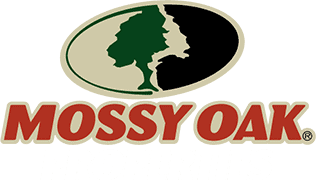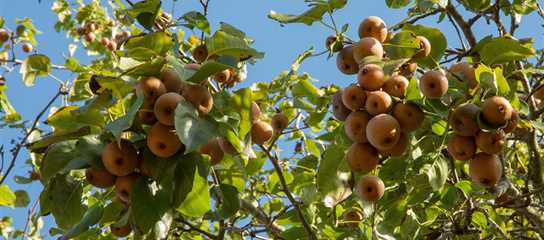David Hawkins
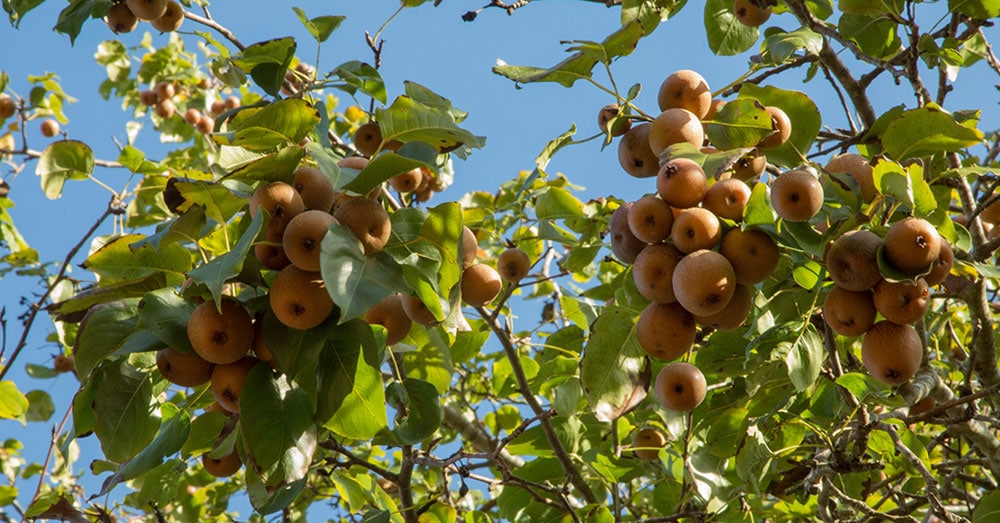
Ask any game manager to name the top threats to the long-range health of wildlife and most will include “habitat loss.” Urban and suburban sprawl is eating up fields and forests at a record rate. No longer is it rare to see big game, including deer, elk, bear, and moose roaming the streets looking for nourishment. Adding mast-producing trees for wildlife on your property will not be a “quick fix,” but in the long run will go a long way toward providing what critters need to not only survive but prosper.
For the beginner who may be reading this: mast is the fruit produced by a tree or bush, such as acorns from oaks, or the fruit of the persimmon, crabapple, or other fruit trees. Acorns are an example of a hard mast, while fruit is considered a soft mast. Within all mast is a percentage of tannin. It is the compound that makes some mast bitter or unpalatable. The lower the tannin content the more palatable the mast. An acorn with higher tannin levels (usually red oaks) will often be passed up by deer for lower tannin-producing species (white oaks) if they are available. However, the acorns with higher tannins will, in time, lose those tannins because of rain events and such, making them more desirable. Persimmons are considered astringent due to elevated tannins, until fully ripe and mushy, but deer seemingly gobble them up in either form.
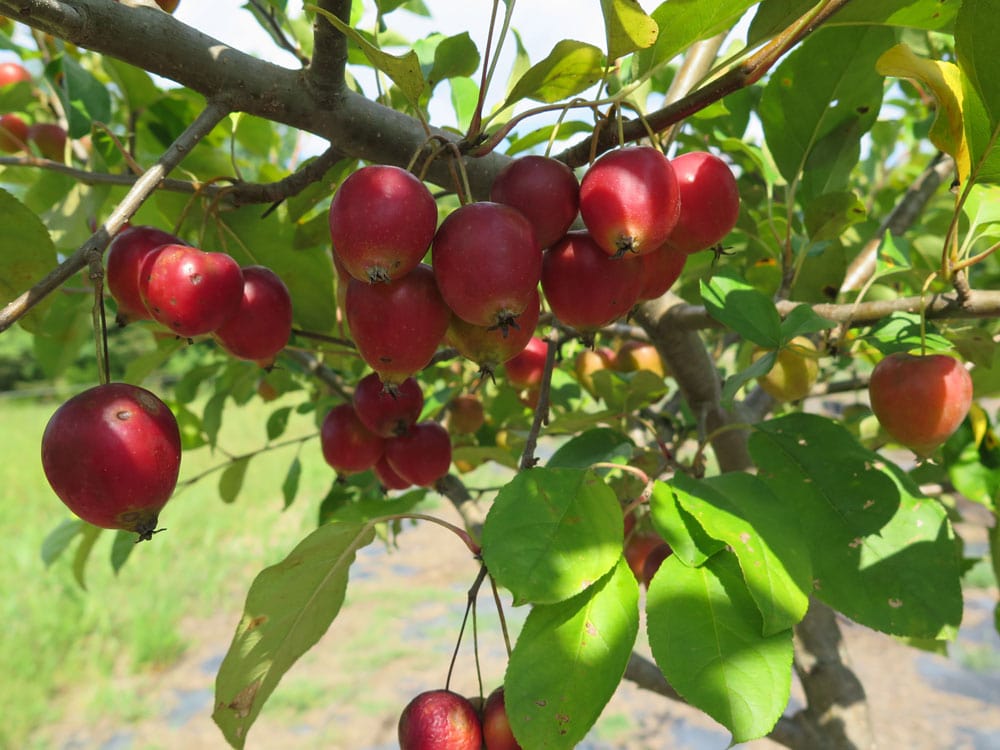
Long-range planning is vital to a successful tree-planting endeavor. The gamekeeper must have the power to envision what the forest will look like long after his or her ashes have been scattered across the fields and forests. This planning can be accomplished through self-education or enlisting the assistance of a wildlife manager/arborist.
Identifying those trees with the best probability of successful production in your location is contingent on knowing the planting zone in which you live. These USDA hardiness zones in the “continental U.S.” range from zone 11 in the extreme south of Florida, to a bit of zone 2 in Northern Minnesota. There is a USDA map site that will allow a user to enter their zip code and find out a zone for their location.
“We help people develop a tree-planting plan daily,” said Dudley Phelps, Manager of Mossy Oak Nativ Nurseries. “We offer something for every zone in the country. No matter the landowner or forester we should have a “tree solution” that helps them meet their goals.
THE MIGHTY OAKS (QUERCUS)
Acorns are a highly preferred fall and winter food source for wildlife, especially deer. The brown fruit of oaks is rich in protein, fat and other nutrients deer, turkeys, and a host of other game find palatable. American Indians used ground acorn meat to create a meal for making bread. They knew how to leach the tannins from the acorns to make the flour palatable for their consumption.
For the most part, there are 2 “families” (called taxonomic sections) of acorn producing oaks, white oaks (called section Leucobalanus), and red oaks (called section Erythrobalanus). The ever-popular, non-native sawtooth oak (Quercus acutissima) is neither in the white section of oaks or the red section. It is in a section called “Cerris.” Sawtooth oak grows fast and produces at a young age, but doesn’t become a timber size like its native cousins. Sawtooth oaks are high in tannins but drop at a time of year when there aren’t other acorns dropping, so deer and other critters gobble them up.
Based on a 20’ x 20’ grid, sawtooth’s will make a fine acorn orchard or do well planted separately. A native of East Asia the sawtooth arrived in America in the 1920s and has taken root (pun intended).
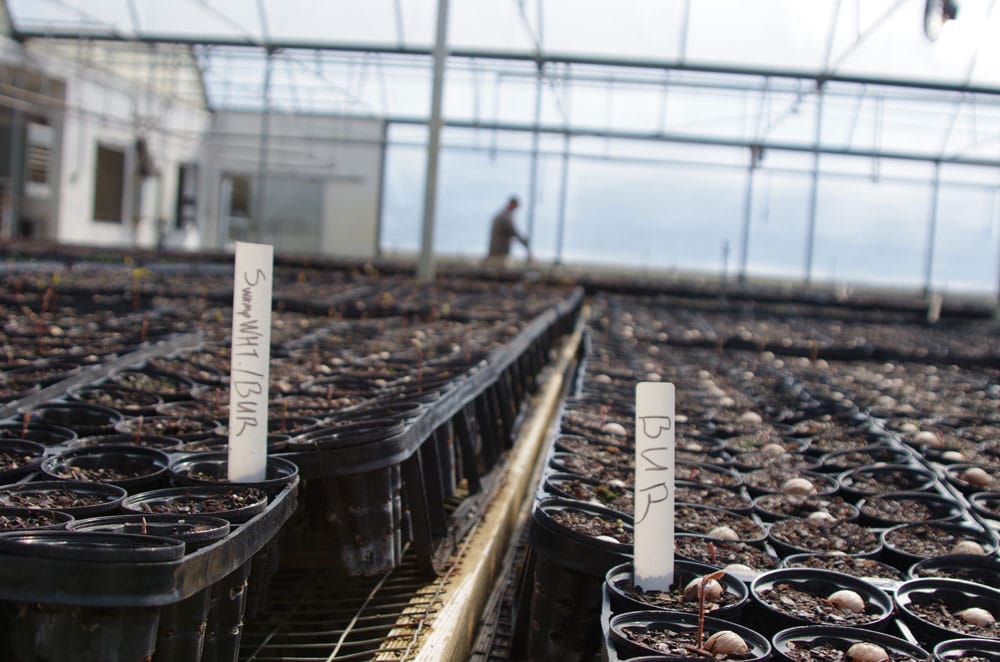
White oaks (Quercus alba) have long been held in high esteem as a wildlife food source and as a valued timber producer. Many of America’s railroads ran on tracks anchored to the white oak cross-ties. Also prized for furniture and flooring, white oaks were harvested heavily in the 19th and 20th centuries. Today most landowners are more interested in the white oak as a hard mast producer for deer. Ditto for the “swamp white” (Querus bicolor) or “swamp chestnut” (Quercus michauxii) variety. The acorns may be slightly different in size and shape but both are “top-drawer varieties” for the gamekeeper looking to leave a forest heritage.
Oaks from the red oak section are very widespread and considered more important than white oak because they more often than not produce a crop – compared to white oaks that often have off years from time to time. Due to their higher tannin levels and ability to wait until spring to sprout, the acorns remain edible long after they drop from the tree. This feature makes them a frequent late-winter food source for turkeys. They scratch for them under the leaf litter and even beneath the snow until the food source is depleted or they can’t access it any longer.
The Nuttall oak (Quercus texana), is a fast-growing red oak that is tolerant of poorly drained soils (“wet feet”) and intermittent flooding, making it a great candidate for planting in duck impoundments. It produces medium-sized acorns that drop very late in the year compared to most other oaks. For this reason alone, the Nuttall oak is a good one to include on your property. But it doesn’t have to be planted in a poorly drained area. In fact, it’ll grow even faster when planted on a well-drained bottomland site.
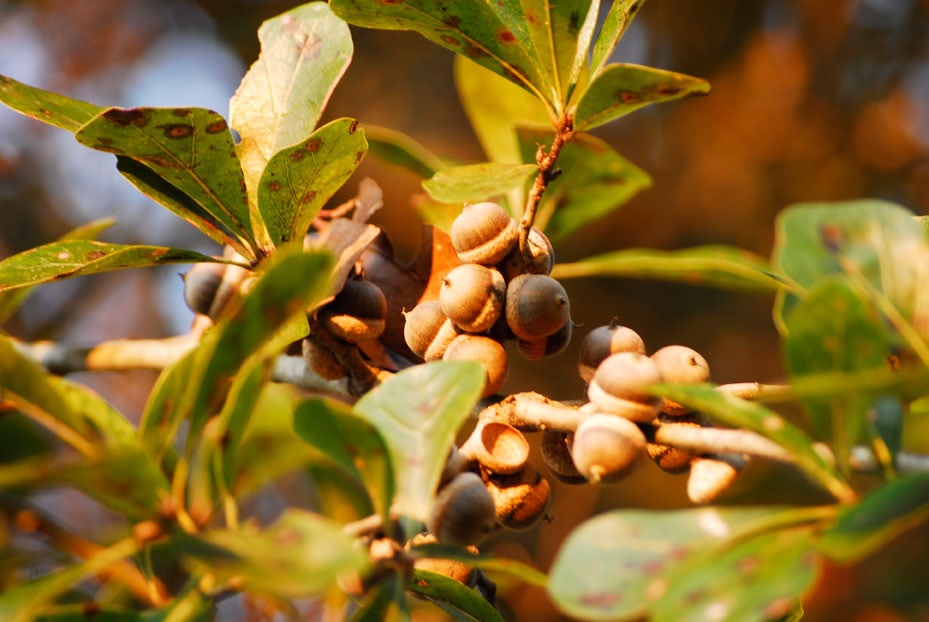
The water oak (Quercus nigra) is a fast-growing, quick-producing tree that provides a heavy yield even in poor soil. Characterized by drooping limbs, the water oak and its cousin the “willow oak” (Quercus phellos) are seen in many areas of the country where unkempt woodlots or cut-overs exist. They start producing at about age 15 but reach peak acorn production much later.
Pin oaks (Quercus palustris) are a bitter pill to swallow. Deer will pass a lot of pin oaks to find a white oak. However, being bitter creates an advantage for turkeys. Because the Pin oak fruit is bitter, other animals leave it until the very last to eat. Turkeys do not chew their food but swallow the acorns whole and they are digested later in the crop.
Other oaks to consider are the burr oak, live oak, and black-jack oak – depending on the region where you are planting.
EARLY HUNTING SEASON TREATS
 Persimmon trees are either male or female – they are not self-pollinating.
Persimmon trees are either male or female – they are not self-pollinating.
Seeds are produced and thus young trees grow at approximately a 50-50 ratio. Those trees growing from roots or stumps will be the same-sex of the original tree. When the trees are young there is no way to sex them, so planting several is the best option. Being fairly common, wild persimmons may pollinate with the new plants when they mature. There has been some success reported by nurseries that have grafted known female branches on male trees so that a self-pollinating tree is the result.
Honey locust(s) (Gleditsia triacanthos) are wicked-looking trees. Thorns several inches long adorn the trunks and limbs. The seed pods don’t actually contain honey but they are sweet and attract deer and black bear. The seeds are scattered by the animals scat and are more prone to sprout if the coating of the seed has been roughed by the digestive process. The maturity of the pods often occurs during early archery season, making the plants popular with those hunters.
Pears (Pyrus communis) are a popular fall fruit with humans and critters. Deer pears are really nothing more than commercial pears that have lost the genetics that make them large marketable fruit. Pears may be too early dropping for mid-season hunters, but when planted in conjunction with an assorted variety of trees and bushes with varied ripening times, deer will learn there is something there to eat. Combine this with cool and warm season food plots and the deer have a “cafeteria” at their disposal.
Apples (Malus domestica) are more common in the Northeast and Midwest than in the Deep South.
There are varieties designed to be used for cider, sauce, fresh eating, or cooking. A quick sampling found almost 300 different varieties including standard, hybrid, and grafted. Based on your zone, shop for those apples that best naturalize, produce good size fruit, and bear for a long period of time. Some varieties will hold their fruit well into fall and may still be dropping when snow covers the ground.
PREP AND PLANTING TREES FOR WILDLIFE
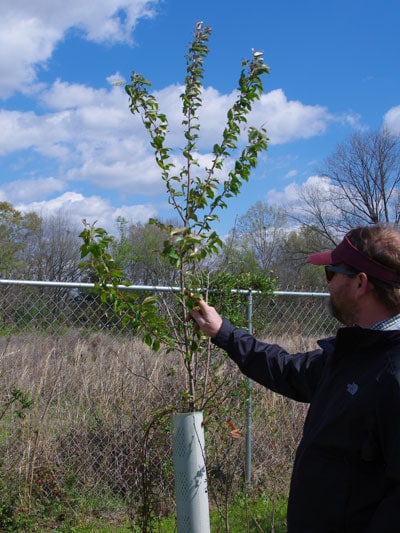 According to Phelps, the planning process should begin with the desired end result in mind. Envision how the finished project will look and take the first step toward that end. Lofty goals are fine, but understand that advancing with small projects will be less stressful and may result in a more quality result. Hard mast trees, such as oaks may take longer to produce so get them out of the way sooner. Soft mast will come on much sooner, so save them for the later part of the plan. Or if there are several “plots” where there is a combination of hard and soft mast concentrate on one plot at a time until all are done.
According to Phelps, the planning process should begin with the desired end result in mind. Envision how the finished project will look and take the first step toward that end. Lofty goals are fine, but understand that advancing with small projects will be less stressful and may result in a more quality result. Hard mast trees, such as oaks may take longer to produce so get them out of the way sooner. Soft mast will come on much sooner, so save them for the later part of the plan. Or if there are several “plots” where there is a combination of hard and soft mast concentrate on one plot at a time until all are done.
Once the plants and location have been decided get to work on site prep. Trees need sun, plain and simple. Water is the second critical need. With those in mind, place stakes or flags to layout the vision for the plot. It may be as simple as a row of sawtooth oaks along a drainage ditch or an orchard or pears, apples, and persimmons. If you are incorporating CRP land make sure the trees you plant fall with the criteria for the program.
“There are lots of ways to dig holes,” Phelps said. “We ship many of our plants in their first year so the root ball is small, propagated in a self-pruning cup. A nine-inch auger and a three-foot hole is serious overkill. A manual device such as a post-hole digger will be fine for these young trees.”
Phelps went on to say, “Dig the hole then fill it back in with the soil just removed, wait until the soil has settled for a short time, preferably through a rain or two, then plant the tree. Use care to not plant the tree too deep. Next, protect the tree with a ring of mulch or a commercial tree ring and keep several additional feet around the tree closely clipped so competition for water is reduced.
Fertilizer depends on the tree and the location. Organic fertilizers are recommended since that is what a tree has in the woods.
Lastly, use a tree-tube to protect the trees from bark-nibbling deer, rodents, or beaver. So there you have it. Develop a plan with the assistance of an expert advisor, choose those species of plants best suited for your zone, and put the plan into motion.
